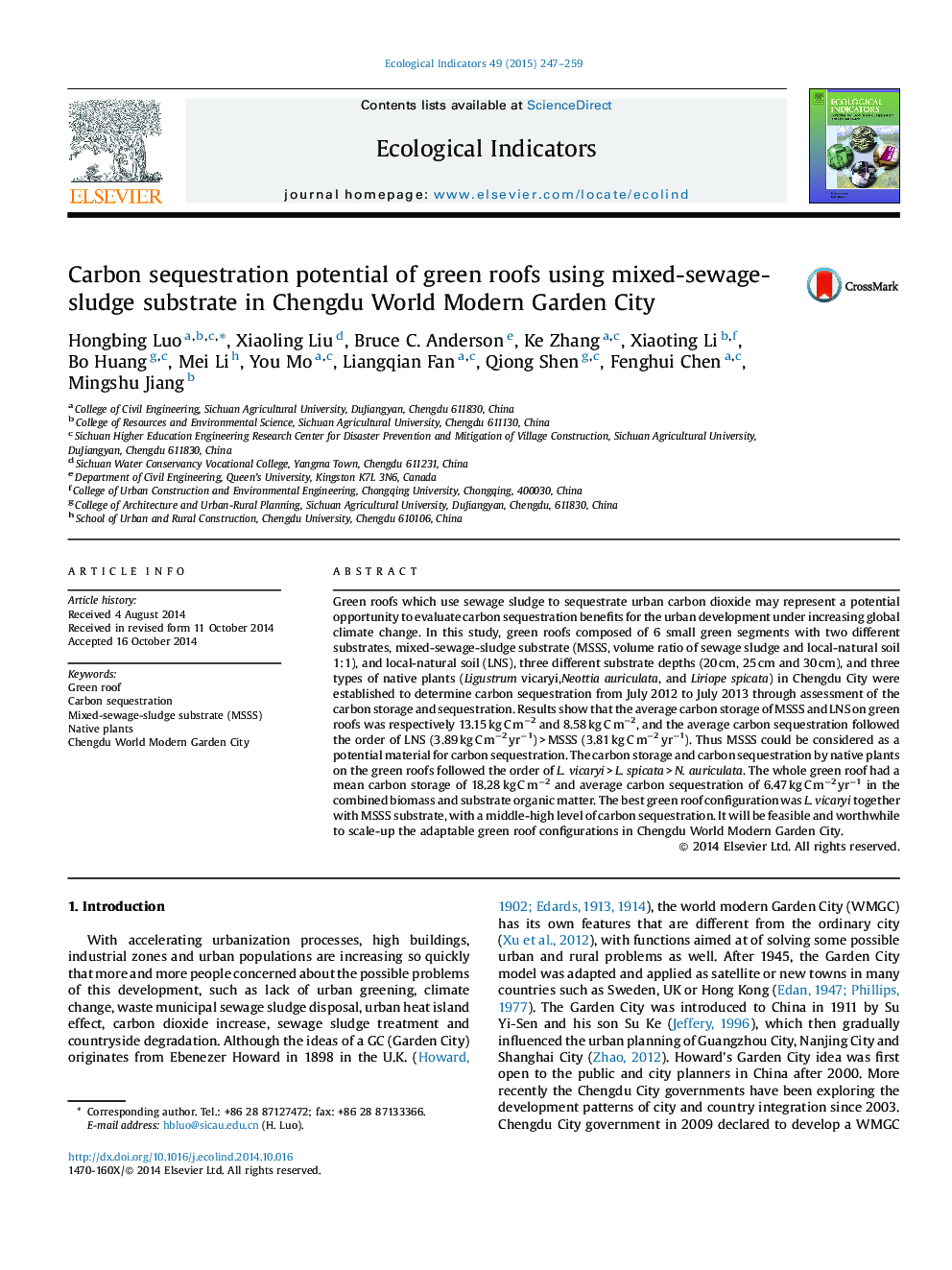| Article ID | Journal | Published Year | Pages | File Type |
|---|---|---|---|---|
| 6294821 | Ecological Indicators | 2015 | 13 Pages |
Abstract
Green roofs which use sewage sludge to sequestrate urban carbon dioxide may represent a potential opportunity to evaluate carbon sequestration benefits for the urban development under increasing global climate change. In this study, green roofs composed of 6 small green segments with two different substrates, mixed-sewage-sludge substrate (MSSS, volume ratio of sewage sludge and local-natural soil 1:1), and local-natural soil (LNS), three different substrate depths (20 cm, 25 cm and 30 cm), and three types of native plants (Ligustrum vicaryi, Neottia auriculata, and Liriope spicata) in Chengdu City were established to determine carbon sequestration from July 2012 to July 2013 through assessment of the carbon storage and sequestration. Results show that the average carbon storage of MSSS and LNS on green roofs was respectively 13.15 kg C mâ2 and 8.58 kg C mâ2, and the average carbon sequestration followed the order of LNS (3.89 kg C mâ2 yrâ1) > MSSS (3.81 kg C mâ2 yrâ1). Thus MSSS could be considered as a potential material for carbon sequestration. The carbon storage and carbon sequestration by native plants on the green roofs followed the order of L. vicaryi > L. spicata > N. auriculata. The whole green roof had a mean carbon storage of 18.28 kg C mâ2 and average carbon sequestration of 6.47 kg C mâ2 yrâ1 in the combined biomass and substrate organic matter. The best green roof configuration was L. vicaryi together with MSSS substrate, with a middle-high level of carbon sequestration. It will be feasible and worthwhile to scale-up the adaptable green roof configurations in Chengdu World Modern Garden City.
Related Topics
Life Sciences
Agricultural and Biological Sciences
Ecology, Evolution, Behavior and Systematics
Authors
Hongbing Luo, Xiaoling Liu, Bruce C. Anderson, Ke Zhang, Xiaoting Li, Bo Huang, Mei Li, You Mo, Liangqian Fan, Qiong Shen, Fenghui Chen, Mingshu Jiang,
